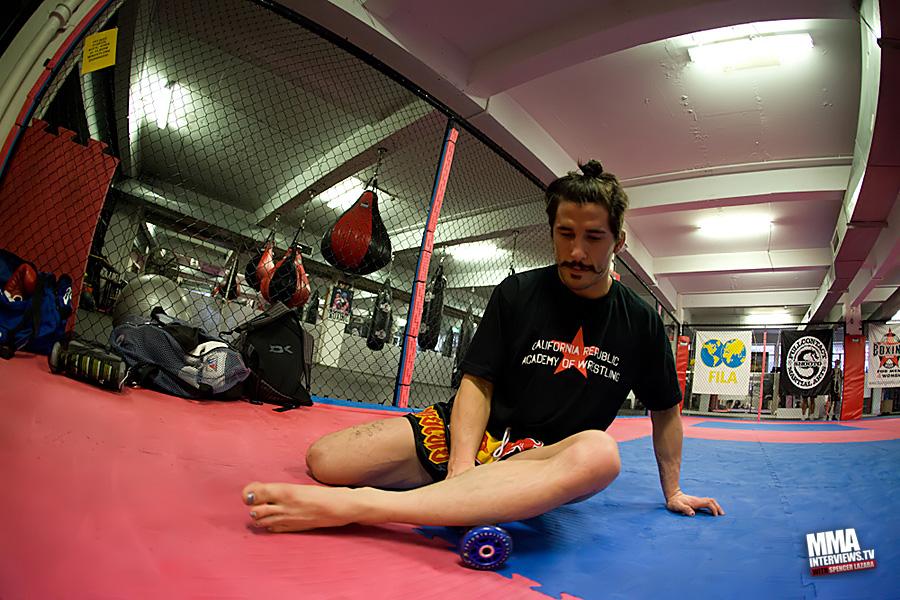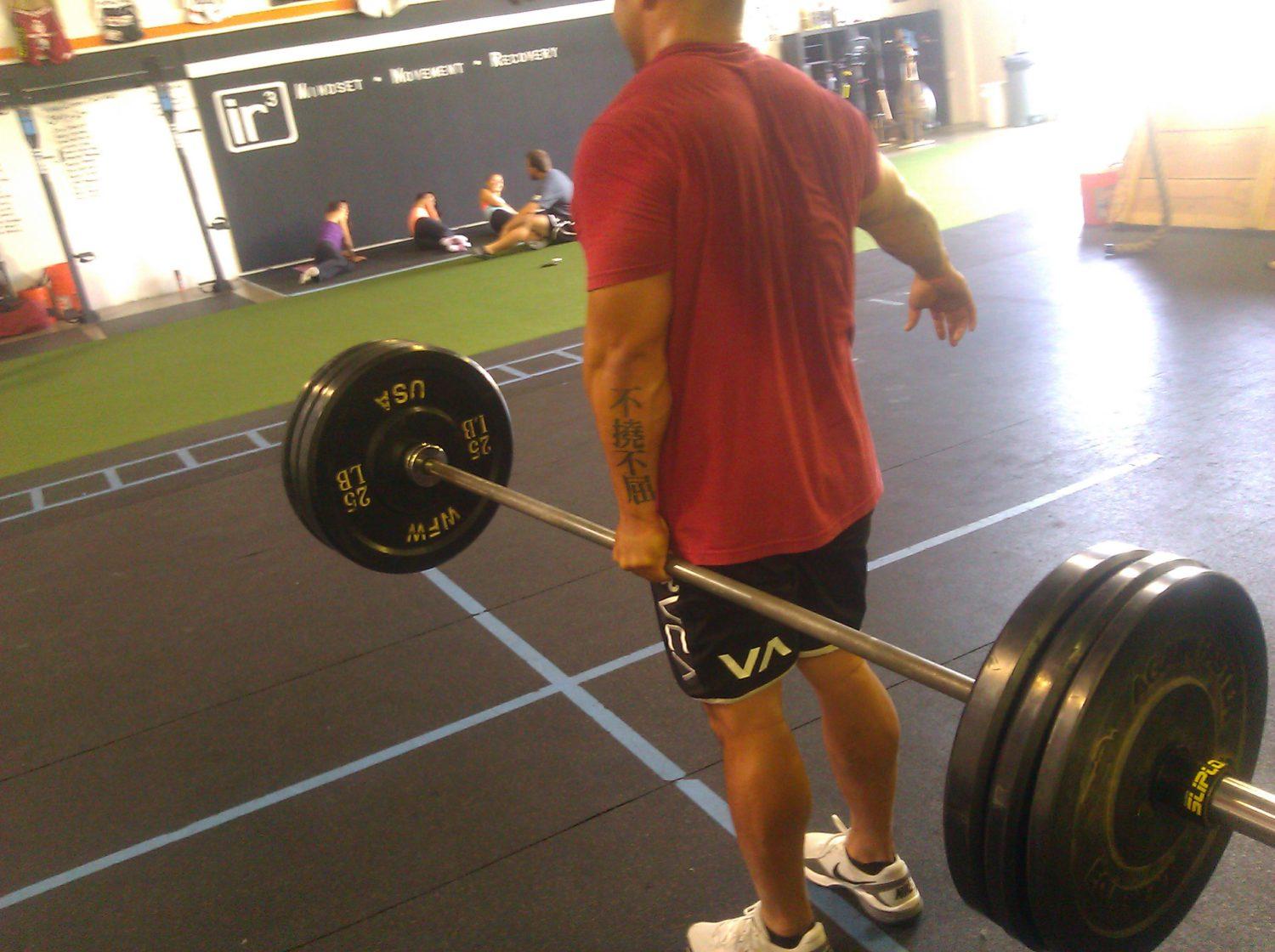
Creating Better Workouts That Fit in Your Busy Schedule
by Corey Beasley
"I have a question, I have a fight coming up in August, and I'm trying to improve in all aspects. How would I incorporate all of the methods mentioned in this email into my training? At the moment I just do sport specific drilling (BJJ, Wrestling, striking, etc) mixed in with the standard power lifts."
-Alston
Training takes time. And when you are juggling a job, school, family and your workouts, it can become overwhelming. Most of us are strapped for time, have other commitments and have to make our time in the gym efficient. In order to get the most bang for the buck, we have to plan ahead, develop a plan that works for us and then work our butts off to stay consistent and get it done. Martial Artists need more than just brute strength. Things like mobility, stability, strength, speed, power and conditioning all play a role during a fight. The challenge is determining how and when to fit these factors into our training schedule.
Below is a general template that we use with our athletes.
Used correctly, this will help you stay healthy, improve athleticism, prevent unnecessary injuries and develop strength.
A Simple WORKOUT Template
1. Start here: Soft Tissue Work
Before practice, 3-5 minutes.
Foam rolling, trigger point kits, tennis balls, lacrosse balls and other simple tools can be a life saver. Training is tough and we all get tight muscles, soreness and minor aches and pains. Rolling out before warming up can help relieve tight muscles, reduce soreness and help us move more efficiently during our workout.
Here are the SMR tools that I use every week.
2. Dynamic Warm Up
*10 minutes
Warming up properly helps raise our core temperature, loosen stiff joints/muscles, raise our heart rate and prepare us for the workout. While this isn't always the most popular pieces of a workout, it is essential.
We typically start with dynamic movements that help open up the ankles, hips and upper back, then do some sort of crawling, and then finish with runs, side shuffles, carioca, skips, butt kickers or other agility work.
3. Activate
*Usually quick, 5-10 minutes, to either activate weak links or to stimulate the nervous system.
This portion is very individualized for our athletes.
Everyone has strengths, weaknesses, injuries and ailments that they are working around. Because of these differences, its important to address everyone's weak links and make them stronger. For example, many athletes have poor posture, weak glutes, dysfunctional abdominal walls and more. Taking a few minutes to isolate these problem areas and getting them to fire properly, can help us be better prepared for our main lifts, drills or exercises.
We may also use this section for plyometric progressions, speed or explosive work. Ladders, cones, hurdles, jumps, etc.
It all boils down to the athlete's ability level and goals. A relatively young, uncoordinated wrestler may need to work on body awareness and control, where a UFC fighter, that's 4 weeks out may be able to handle more difficult progressions.
4. Strength - Get Stronger
*Duration depends on the goal that day, but this is typically 20-40 minutes worth of work.
"All roads lead to Rome, but some get us there quicker than others"
People can argue until they are blue in the face about whether barbells are better than kettlebells...or whatever.
The truth is that there are tons of ways to stimulate an athlete and get them to perform better. Some guys swear by core exercises, while others live by power lifting techniques.
My biggest rule is to DO NO HARM.
In order to avoid this, I am constantly asking about injuries that they have incurred during practice, aches and pains, training volume, intensities of other practices, energy levels, sleep quality and more. From there, I have to determine what type of workout the athlete needs to get better.
I ask myself, what is the most simple, effective way to get this athlete to their goal.
In my mind, I break exercises down by movement pattern. We all crawl, walk, run, carry, squat, lunge, push, pull, hinge and twist. Taking these basic patterns into account, its relatively easy to categorize different exercises and come up with a basic plan of attack.
From there we can lay out a weekly workout schedule that addresses their needs, helps them improve and works well with the rest of their training schedule.
*If you workout twice per week, workouts should be full body and should incorporate a variety of compound movement patterns that challenge the entire body..
**If you train three times per week, you may split workouts and focus on different movements on different days. For example, you may split the workouts into lower and upper body days.
***If you train 5-6 days per week, it is essential to vary movements, intensities, volume, etc, to avoid over training. For example, you may split the days into heavy upper, light lower, recovery day, light upper, heavy lower or something similar to allow your body to recover and perform.
Here are a few of our favorite articles about getting stronger: click here
5. Conditioning - Expand the Tank
*Depending on the goal that day, conditioning can be a finisher or the main focus of the workout. Finisher may be 10 min or less, while conditioning focused workouts may last up to 40 minutes.
On most days, I like to save the conditioning aspect of the workout for the end of practice or the workout.
Why? Because, I do not want athletes to sacrifice technique, speed, strength, power and intensity.
While conditioning circuits have their place and can be beneficial, I think the two should be separated most of the time.
Get strong and powerful during the strength piece and then stimulate the cardiovascular system at the end (or in another session), using simple drills that don't require too much technique or neurological demands.
For example...Olympic lifts demand technique, concentration, timing and control. They are great for developing power, but when used during a circuit, is a recipe for disaster. I prefer to use simple drills like sprinting, isometric holds, battling ropes, crawling and other drills that allow the athlete to work hard, with less potential for injury.
For more Conditioning info, check out this article: Noone Should Lose a Fight Because They Are Out of Shape
Stretching, rolling and breathing at the end of workouts can help speed recovery, reduce the heart rate and calm the mind.
This can also be easily overlooked, but is an important way to avoid injury and reset the system for the rest of the week.
I like to use a combination of foam rolling, static stretches, and deep breathing to finish workouts and cool down.
Areas of focus may change, depending on your body, but here are some general guidelines.
Address the calves, hamstrings, quads, hip flexors, glutes, lats, chest, shoulders and wrists. When you find tight spots, trigger points or areas that are stiff, spend more time on those spots.
Hopefully this will help you develop workouts that are more efficient and help you become more prepared for your next competition. Over time, we will address each one of these sections in more detail and provide more details on how to use these techniques, when to use them and how to make adjustments along the way.
#fightcampconditioning








